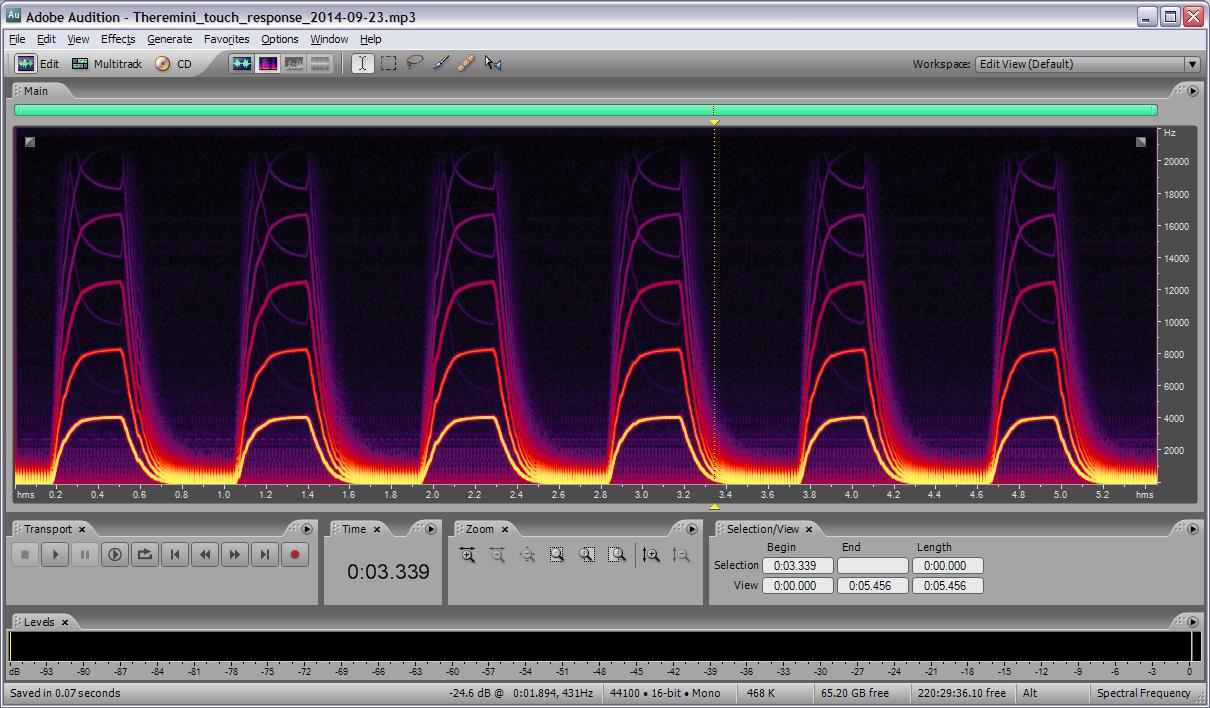Peter wrote:
"I can usually adjust my playing after a couple of minutes to accommodate the characteristics of an instrument no matter how bizarre it may be. There is one thing, however, about the THEREMINI that I cannot compensate for and cannot adjust to - its lack of response."
Indeed, with well-developed hand/ear coordination, one can adjust to different theremins. However, it takes very little latency to throw everything off. Only a few milliseconds is all it takes.
I suspect that the theremini may utilize a table-lookup to accomplish its calibration -- similar to how the Little Phatty works. In the case of the LP, the calibration procedure populates a table of control voltages that, in turn, drive a VCO that may or may-not be running at precisely 1v/8ve.
In the case of the Theremini, they would have to match MIDI notes to voltages derived from the pitch circuitry. Of course, this approach is doomed from the standpoint of latency. Now, I don't know if this is how the Theremini works -- but the calibration procedure suggests something along those lines.
I had considered something like this sometime ago: namely that the frequencies from the variable oscillator could be mapped (converted) to output control-voltages such that a linear response (1v/8ve) would result. However, for me, this was a mental exercise in that I've never done any DIY microcontroller stuff and, well, the theremin that I have (an Epro) works fine as is. I suppose with a fast enough microcontroller that, in turn, feeds ANALOG (no noticeable latency) circuitry one might accomplish the deed.
So, can it be done? Can one create a playable theremin that can quantize pitch while allowing vibrato that has no (noticeable) latency? Well, yes -- it is possible. However, the tone would come from a VCO and NOT from the theremin's detector circuit. However, in my experiments, I have found that the theremin's response and shading define the "theremin-sound" much more than the actual waveform.
Alas, my equipment is packed up at the moment however when I finally am set up again, I will do a video demo of this (most likely a winter project, though).


